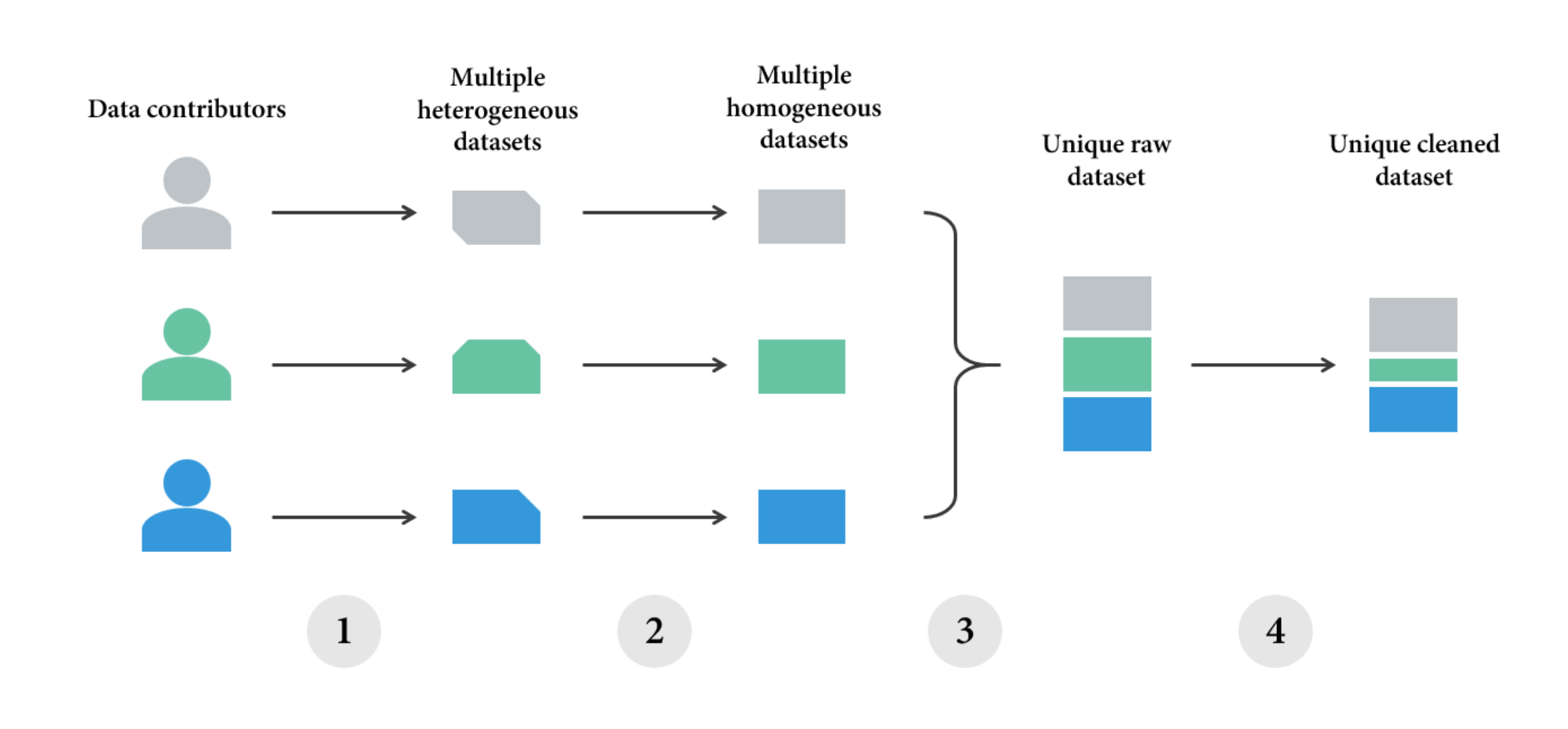Global syntheses of variables representing the status and trends of coral reefs, like hard coral cover, are essential to inform large-scale policies (e.g. Convention on Biological Diversity) and understand drivers responsible for observed trends. The production of such quantitative syntheses relies on data acquired globally by different monitoring programs. These programs usually use different monitoring methods (e.g. photo-quadrat, line intercept transect), different units (e.g. meters, feet), and different data formats (e.g. long or large formats, CSV or Excel spreadsheets).
To produce global syntheses, it is necessary to go through a stage called data integration (Figure 1), which aims to build a unique homogeneous dataset (called “synthetic dataset”) from the multiple heterogeneous individual datasets shared by people in charge of monitoring programs.

SocMon collects a total of 60 socioeconomic variables and 10 social vulnerability/adaptive capacity variables, which are measured through interviews, surveys, and secondary data. These variables include information on:
SocMon data have been collected in seven regions: Brazil, Caribbean, Central America, South Asia, Southeast Asia, Pacific Islands, and Western Indian Ocean. As of 2021, there have been 145 assessments completed in 42 countries, with more than 21,000 surveys and interviews collected. For more information on SocMon data, please refer to the SocMon Manual and Regional Guidelines available.
Moving forward, a common database is needed to store all the regional SocMon data collected, enhance capacities, foster collaboration and integration with all of GCRMN. However, SocMon needs long-term funding and support to sustain socioeconomic monitoring. A stronger partnership within GCRMN is also needed so that socioeconomic and biophysical data can be integrated for a holistic understanding of human-nature interactions and why trends are occurring.
The GCRMN started SocMon, a socioeconomic monitoring initiative, in 2000 for the purpose of advancing the global and regional understanding of human interactions with and dependence on coral reef resources. Because people are part of the ecosystem, this socioeconomic monitoring is meant to complement the biological and physical monitoring also being conducted by the GCRMN.
Socioeconomic monitoring is important in order to track how people use and depend on coral reefs, and to understand human impacts to coral ecosystems so that we can mitigate negative effects while promoting positive benefits. Socioeconomic monitoring provides essential data on the human dimensions of coral reefs that should not stand alone, but should be integrated into biophysical monitoring for a holistic understanding of the entire social-ecological system. It is not only critical to better understand the desired ecosystem services, drivers and pressures of change, state of the ecosystem, and appropriate responses, but also absolutely needed for successful coral reef conservation and effective management.
An operational network of:
![]() The International Coral Reef Initiative (ICRI) is a proactive partnership between Nations and organisations which strives to preserve coral reefs and related ecosystems around the world. GCRMN is an operational network of ICRI, acting as one of its implementing arms.
The International Coral Reef Initiative (ICRI) is a proactive partnership between Nations and organisations which strives to preserve coral reefs and related ecosystems around the world. GCRMN is an operational network of ICRI, acting as one of its implementing arms.
The International Coral Reef Initiative (ICRI) is a proactive partnership between Nations and organisations which strives to preserve coral reefs and related ecosystems around the world. GCRMN is an operational network of ICRI, acting as one of its implementing arms.
Global Coral Reef Monitoring Network (GCRMN) | © 2022 All rights reserved | Powered by piknetart